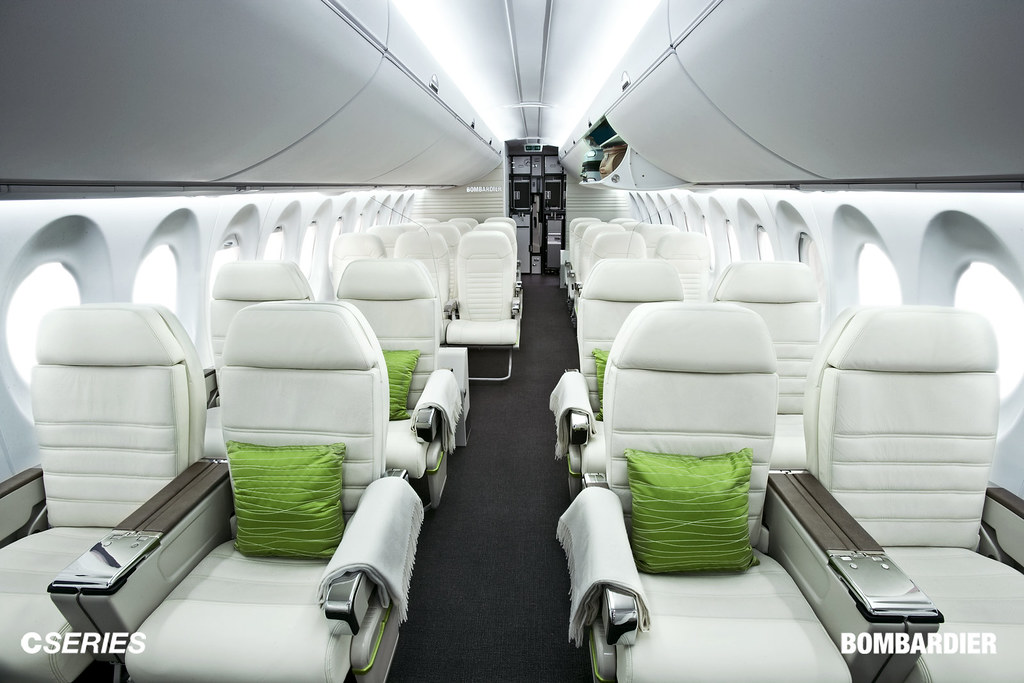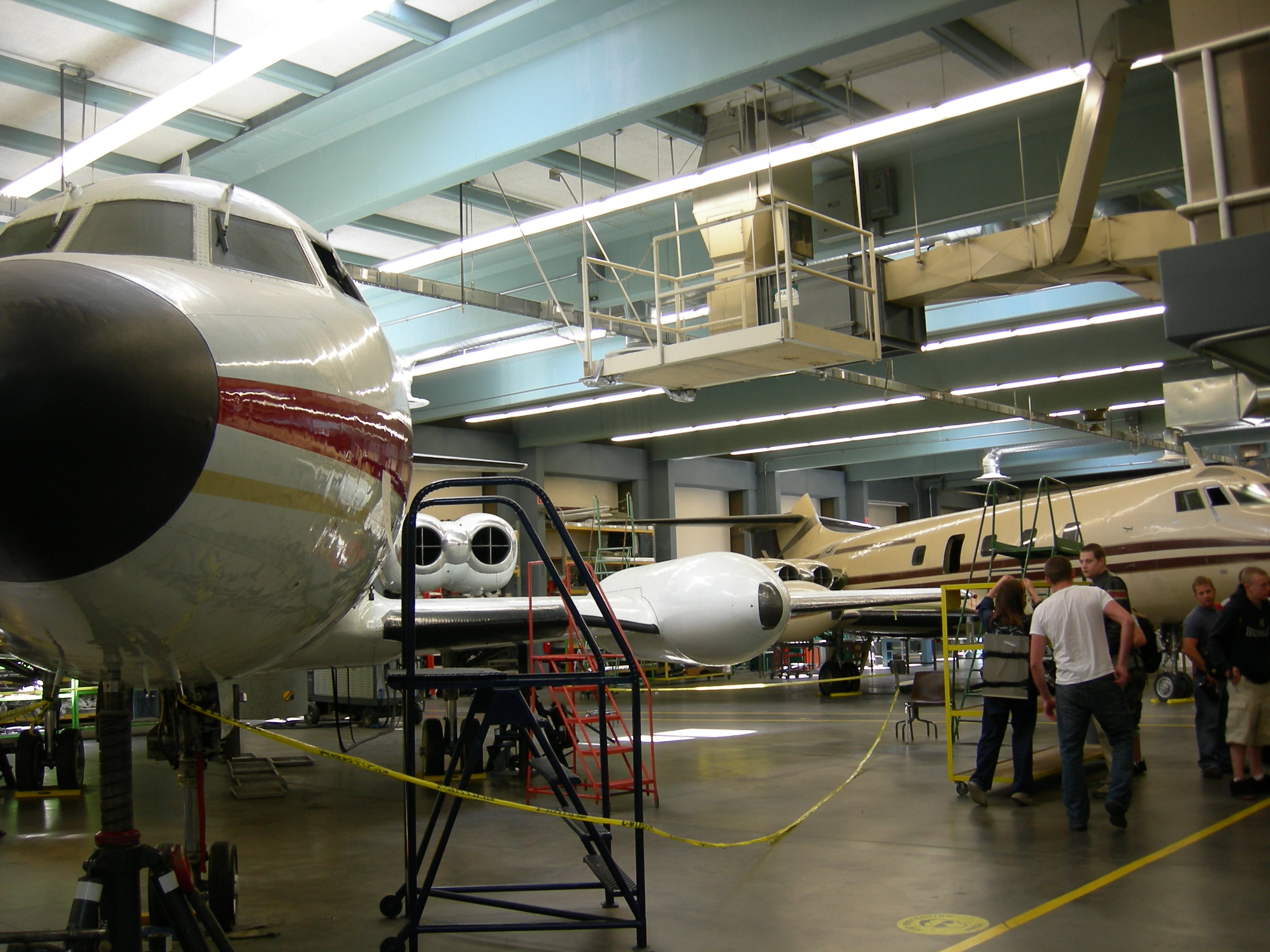The major aircraft structures
are wings, fuselage, and empennage. The primary flight control surfaces, located on the wings and empennage, are ailerons, elevators, and rudder. These parts are connected by seams, called joints.
All joints constructed using rivets, bolts, or special fasteners are lap joints. Fasteners cannot be used on joints in which the materials to be joined do not overlap - for example, butt, tee and edge joints. A fayed edge is a type of lap joint made when two metal surfaces are butted up against one another in such a way as to overlap.
Internal aircraft parts are manufactured in four ways: Milling, stamping, bending, and extruding. The metal of a milled part is transformed from cast to wrought by first shaping and then either chemically etching or grinding it. A stamped part is annealed, placed in a forming press, and then re-heat treated.
Bent parts are made by sheet metal mechanics using the bend allowance and layout procedures. An extrusion is an aircraft part which is formed by forcing metal through a preshaped die. The resulting wrought forms are used as spars, stringers, longerons, or channels. In order for metal to be extruded, bent, or formed, it must first be made malleable and ductile by annealing. After the forming operation, the metal is re-heat treated and age hardened.
Airbus Wings
Here in the UK and in particular at the Airbus facility in North Wales, our expertise is in the manufacture of aircraft wings. Aircraft wings have to be strong enough to withstand the positive forces of flight as well as the negative forces of landing. Metal wings are of two types: Semicantilever and full cantilever. Semicantilever, or braced, wings are used on light aircraft. They are externally supported by struts or flying wires which connect the wing spar to the fuselage. A full cantilever wing is usually made of stronger metal. It requires no external bracing or support. The skin carries part of the wing stress. Parts common to both wing designs are spars, compression ribs, former ribs, stringers, stress plates, gussets. wing tips and wing skins.
Airbus at Broughton employs more than 5,000 people, mostly in manufacturing, but also in engineering and support functions such as procurement and finance.
Wing Spars
Two or more spars are used in the construction of a wing. They carry the main longitudinal -butt to tip - load of the wing. Both the spar and a compression rib connect the wing to the fuselage.
Compression Ribs
Compression ribs carry the main load in the direction of flight, from leading edge to trailing edge. On some aircraft the compression rib is a structural piece of tubing separating two main spars. The main function of the compression rib is to absorb the force applied to the spar when the aircraft is in flight.
Former Ribs
A former rib, which is made from light metal, attaches to the stringers and wing skins to give the wing its aerodynamic shape. Former ribs can be classified as nose ribs, trailing edge ribs, and mid ribs running fore and aft between the front and rear spar on the wing. Formers are not considered primary structural members.
Stringers
Stringers are made of thin sheets of preformed extruded or hand-formed aluminum alloy. They run front to back along the fuselage and from wing butt to wing tip. Riveting the wing skin to both the stringer and the ribs gives the wing additional strength.
Stress Plates
Stress plates are used on wings to support the weight of the fuel tank. Some stress plates are made of thick metal and some are of thin metal corrugated for strength. Stress plates are usually held in place by long rows of machine screws, with self-locking nuts, that thread into specially mounted channels. The stress-plate channeling is riveted to the spars and compression ribs.
Gussets
Gussets, or gusset plates, are used on aircraft to join and reinforce intersecting structural members. Gussets are used to transfer stresses from one member to another at the point where the members join.
Wing Tips
The wing tip, the outboard end of the wing, has two purposes: To aerodynamically smooth out the wing tip air flow and to give the wing a finished look.
Wing Skins
Wing skins cover the internal parts and provide for a smooth air flow over the surface of the wing. On full cantilever wings, the skins carry stress. However, all wing skins are to be treated as primary structures whether they are on braced or full cantilever surfaces.
Fuselage Assemblies.
The largest of the aircraft structural components, there are two types of metal aircraft fuselages: Full monocoque and semimonocoque. The full monocoque fuselage has fewer internal parts and a more highly stressed skin than the semimonocoque fuselage, which uses internal bracing to obtain its strength.
The full monocoque fuselage is generally used on smaller aircraft, because the stressed skin eliminates the need for stringers, former rings, and other types of internal bracing, thus lightening the aircraft structure.
The semimonocoque fuselage derives its strength from the following internal parts: Bulkheads, longerons, keel beams, drag struts, body supports, former rings, and stringers.
Bulkheads
A bulkhead is a structural partition, usually located in the fuselage, which normally runs perpendicular to the keel beam or longerons. A few examples of bulkhead locations are where the wing spars connect into the fuselage, where the cabin pressurization domes are secured to the fuselage structure, and at cockpit passenger or cargo entry doors.
Longerons And Keel Beams
Longerons and keel beams perform the same function in an aircraft fuselage. They both carry the bulk of the load traveling fore and aft. The keel beam and longerons, the strongest sections of the airframe, tie its weight to other aircraft parts, such as powerplants, fuel cells, and the landing gears.
Drag Struts And Other Fittings
Drag struts and body support fittings are other primary structural members. Drag struts are used on large jet aircraft to tie the wing to the fuselage center section. Body support fittings are used to support the structures which make up bulkhead or floor truss sections.
Former rings and fuselage stringers are not primary structural members. Former rings are used to give shape to the fuselage. Fuselage stringers running fore and aft are used to tie in the bulkheads and
former rings.
former rings.
Aircraft Empennage Section
The empennage is the tail section of an aircraft. It consists of a horizontal stabilizer, elevator, vertical stabilizer and rudder. The conventional empennage section contains the same kind of parts used in the construction of a wing. The internal parts of the stabilizers and their flight controls are made with spars, ribs, stringers and skins.
Also, tail sections, like wings, can be externally or internally braced.
Horizontal Stabilizer And Elevator
The horizontal stabilizer is connected to a primary control surface, i.e., the elevator. The elevator causes the nose of the aircraft to pitch up or down. Together, the horizontal stabilizer and elevator provide stability about the horizontal axis of the aircraft. On some aircraft the horizontal stabilizer is made movable by a screw jack assembly which allows the pilot to trim the aircraft during flight.
Vertical Stabilizer And Rudder
The vertical stabilizer is connected to the aft end of the fuselage and gives the aircraft stability about the vertical axis. Connected to the vertical stabilizer is the rudder, the purpose of which is to turn the aircraft about its vertical axis.
Ailerons
Elevators and rudders are primary flight controls in the tail section. Ailerons are primary flight controls connected to the wings. Located on the outboard portion of the wing, they allow the aircraft to turn about the longitudinal axis.
When the right aileron is moved upward, the left one goes down, thus causing the aircraft to roll to the right. Because this action creates a tremendous force, the ailerons must be constructed in such a way as to withstand it.
Flight controls other than the three primary ones are needed on high-performance aircraft. On the wings of a wide-body jet, for example, there are as many as thirteen flight controls, including high and low-speed ailerons, flaps, and spoilers.
Flaps And Spoilers
Wing flaps increase the lift for take-off and landing. Inboard and outboard flaps, on the trailing edge of the wing, travel from full up, which is neutral aerodynamic flow position, to full down, causing air to pile up and create lift. Leading edge flaps - Krueger flaps and variable-camber flaps - increase the wing chord size and thus allow the aircraft to take off or land on a shorter runway. Spoilers, located in the center section span-wise, serve two purposes. They assist the high-speed ailerons in turning the aircraft during flight, and they are used to kill the aerodynamic lift during landing by spreading open on touchdown.
Trim Tabs
Connected to the primary flight controls are devices called trim tabs. They are used to make fine adjustments to the flight path of an aircraft. Trim tabs are constructed like wings or ailerons, but are
considerably smaller.
considerably smaller.




